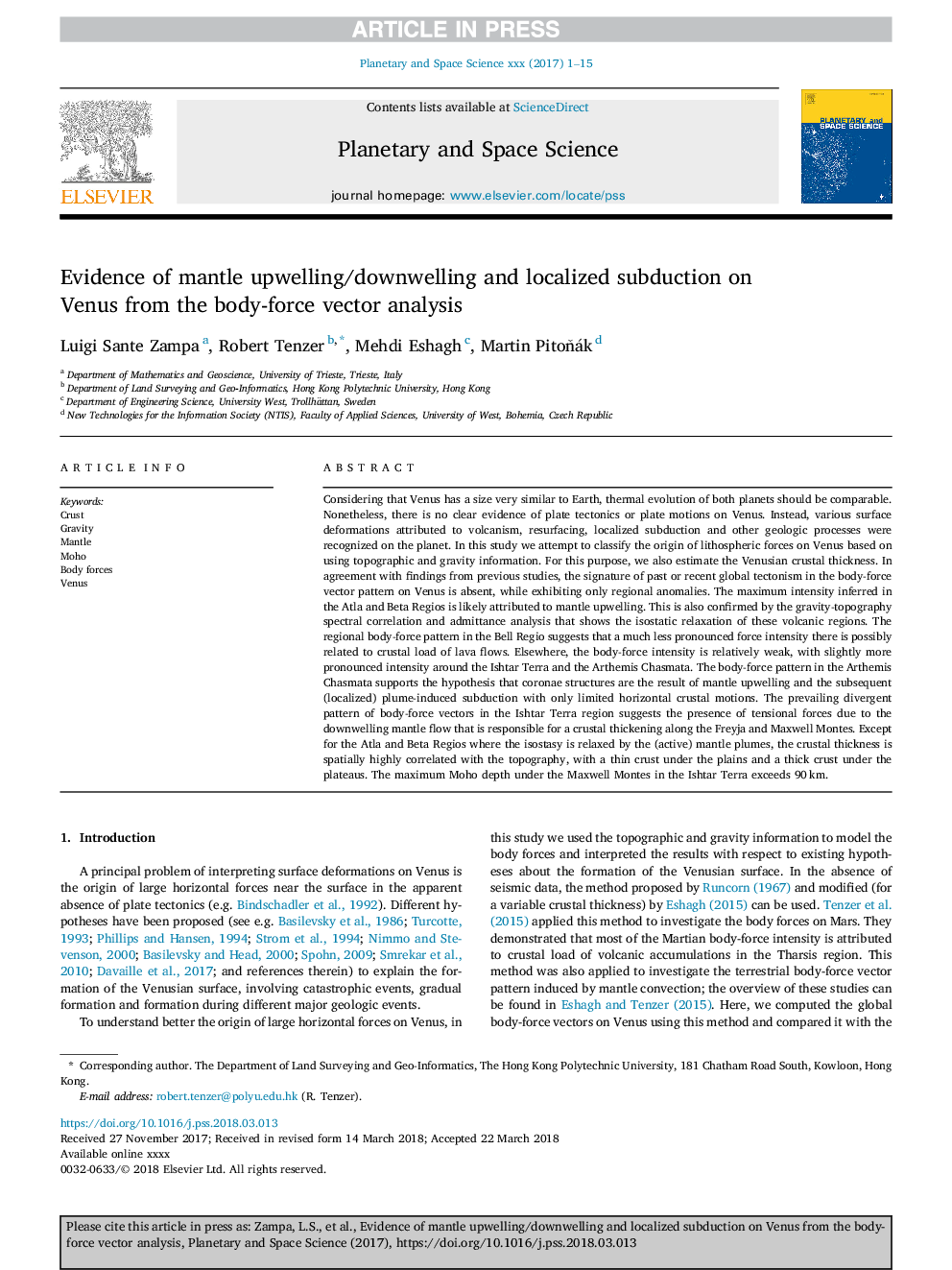| کد مقاله | کد نشریه | سال انتشار | مقاله انگلیسی | نسخه تمام متن |
|---|---|---|---|---|
| 8142134 | 1523883 | 2018 | 15 صفحه PDF | دانلود رایگان |
عنوان انگلیسی مقاله ISI
Evidence of mantle upwelling/downwelling and localized subduction on Venus from the body-force vector analysis
دانلود مقاله + سفارش ترجمه
دانلود مقاله ISI انگلیسی
رایگان برای ایرانیان
کلمات کلیدی
موضوعات مرتبط
مهندسی و علوم پایه
علوم زمین و سیارات
فیزیک زمین (ژئو فیزیک)
پیش نمایش صفحه اول مقاله

چکیده انگلیسی
Considering that Venus has a size very similar to Earth, thermal evolution of both planets should be comparable. Nonetheless, there is no clear evidence of plate tectonics or plate motions on Venus. Instead, various surface deformations attributed to volcanism, resurfacing, localized subduction and other geologic processes were recognized on the planet. In this study we attempt to classify the origin of lithospheric forces on Venus based on using topographic and gravity information. For this purpose, we also estimate the Venusian crustal thickness. In agreement with findings from previous studies, the signature of past or recent global tectonism in the body-force vector pattern on Venus is absent, while exhibiting only regional anomalies. The maximum intensity inferred in the Atla and Beta Regios is likely attributed to mantle upwelling. This is also confirmed by the gravity-topography spectral correlation and admittance analysis that shows the isostatic relaxation of these volcanic regions. The regional body-force pattern in the Bell Regio suggests that a much less pronounced force intensity there is possibly related to crustal load of lava flows. Elsewhere, the body-force intensity is relatively weak, with slightly more pronounced intensity around the Ishtar Terra and the Arthemis Chasmata. The body-force pattern in the Arthemis Chasmata supports the hypothesis that coronae structures are the result of mantle upwelling and the subsequent (localized) plume-induced subduction with only limited horizontal crustal motions. The prevailing divergent pattern of body-force vectors in the Ishtar Terra region suggests the presence of tensional forces due to the downwelling mantle flow that is responsible for a crustal thickening along the Freyja and Maxwell Montes. Except for the Atla and Beta Regios where the isostasy is relaxed by the (active) mantle plumes, the crustal thickness is spatially highly correlated with the topography, with a thin crust under the plains and a thick crust under the plateaus. The maximum Moho depth under the Maxwell Montes in the Ishtar Terra exceeds 90â¯km.
ناشر
Database: Elsevier - ScienceDirect (ساینس دایرکت)
Journal: Planetary and Space Science - Volume 157, August 2018, Pages 48-62
Journal: Planetary and Space Science - Volume 157, August 2018, Pages 48-62
نویسندگان
Luigi Sante Zampa, Robert Tenzer, Mehdi Eshagh, Martin PitoÅák,